 feature – lean thinking is still largely absent from the mining industry. the author explains the great opportunities that lie ahead for an industry with a huge potential to improve.
feature – lean thinking is still largely absent from the mining industry. the author explains the great opportunities that lie ahead for an industry with a huge potential to improve.
words: laura mottola, ceo and founder, lean mining institute – toronto, canada
a career in mining was never my goal. i always planned to become a mechanical engineer, but my career trajectory changed forever when i got a summer job in a mining research center at the end of the first year of my engineering degree at mcgill university in montreal.
i was immediately fascinated by the technical challenges of the mining industry. in particular, i developed a keen interest in the relationship between mining and technology. it didn’t take me long to decide i wanted to become a mining engineer, with a focus on automation and robotics. and that’s what i did.
as a young engineer working on innovation in an industry known for its volatility, i typically found myself having to look for work in other sectors whenever commodity prices dropped (innovation is often the first activity to fall victim to cost-cutting). but every cloud has a silver lining, they say.
during two of the major cycles of low commodity prices i have seen, my experience with automation helped me to find employment in industries that typically don’t hire mining engineers: automotive and aerospace. i spent the first cycle at general motors’ oshawa car assembly plant (at the time, one of the company’s most automated sites) and the second one assembling engines and working with suppliers at pratt & whitney canada. it is here that i first learned about lean thinking – something that has really changed the course of my career. who would have thought that my stints outside of mining could be so fruitful?
when the industry cycle went up again, i promptly got back into mining. this time, however, i had a new weapon at my disposal: a powerful, different way of thinking about work and about management.
golden opportunities
unfortunately, lean in mining is still in its infancy. several companies have lean programs in place, but the uptake has too often proved superficial and focused solely on the use of tools (like 5s or visual management). so far, most of the industry has failed to understand the importance of changing managerial practices and leadership behaviors.
it is time for mining companies to wholeheartedly embrace lean thinking, if anything because the methodology can transform the way the industry operates and solves its most fundamental and complex problems.
for those of you who are not familiar with mining, let me tell you about some of the most pressing challenges it faces as an industry – and why i think lean can help us tackle each of them.
first of all, we have the cyclical nature of the mining and metals sector as an underlying problem we need to address. when commodity prices are high, mining companies make a lot of money (this is also when their costs increase exponentially as they try to “capture the cycle” by producing more). when prices are low, they turn to cost-cutting, shutting down operations and laying people off. the industry is far too dependent on commodity prices, and i believe that lean can level some of that variation, helping companies to remain profitable in any cycle and to keep investing in innovation, people development, and the communities in which they operate.
i believe the priority must be to achieve a shift in mindset: the industry has to go from being a commodity-driven, push production environment to being a pull production industry, connected to the end consumer (you and i) through the transformation of raw materials into products and services that happens downstream. because mining represents the beginning of countless value streams in our economy (from car making to jewellery, energy to construction), leaning it out would have a ripple effect on many other industries and supply chains, and therefore on society at large, not to mention the environment.
even though the causes of the fluctuations we observe in mining are macroeconomic, the impact of these changes is often felt at the most micro of levels. the financial crisis of 2008, for example, resulted in mining companies drastically slashing their costs overnight and decreasing production. this meant considerable job loss for those remote regions around the world in which mining represents the number-one, and often times the sole employer: the supply chains to the mining industry are typically the most hardly hit during a commodity cycle downturn. a leaner mining sector committed to providing stable employment could secure the future of millions of people (and find it easier for mining companies to be granted a social licence to operate).
indeed, corporate social responsibility is a big part of this conversation, with increasing levels of emphasis being placed on environmental issues. mining extracts finite resources from the ground and learning to do it more sustainability is absolutely critical. luckily, we know that lean and green go hand and hand: think of evs and the electrification of the world’s transportation systems as an example. as the mining industry experiences a surge in demand for metals like cobalt, lithium, and graphite (needed for li-ion battery production) we have an opportunity to directly connect the suppliers of those raw materials – the mining companies – with the end customer (say, a person who wants to buy an electric car). the goal here is to create an integrated, circular model for a more sustainable value stream that incorporates responsible sourcing as well as recycling, by combining circular economy principles with lean thinking in what we might aptly call circular lean (c-lean) mining. i have been working on this interesting project with kelly singer of the lean green institute (more on this soon on planet lean).
many of the challenges mining companies encounter are technical in nature. for instance, all the “easy deposits” (those closer to the surface for example) have been exploited, which forces the industry to go look for metals and materials in harsher and inaccessible places – deeper in the ground, higher in the mountains, in the arctic, on the ocean floor, even in space (ever heard of asteroid mining?). as you would imagine, there are higher costs and risks that must be taken into account when trying to reach these types of deposits: for example, as we go deeper, stresses in the rock make it more challenging to keep underground openings available, which exposes people to unacceptable risk. the industry is using automation to remove people from hazardous working conditions, both underground and on the surface (as in high altitude). again, lean can come to the rescue, not only with its strong focus on safety, but also by saving money (lowering costs) that can be reinvested in developing or purchasing the technology necessary to extract those out-of-reach metals.
there’s more. as obvious as it may sound, the lean practice of relentlessly eliminating waste can be applied almost literally in mining: when we extract ore, the inherent value (i.e. the metal content) is trapped in “non-value-adding host material or rock”. when we move, say, a ton of rock, there is generally a very high percentage of waste in it. lean, supported by technology, can help us to reduce the amount of physical waste and increase the quantity of value we extract from the ore (by sorting the rock underground, for example, and only digging up what’s really valuable).
making mining attractive
of all the problems mining faces, one of the most pressing is its image. in the collective imagination, mining is still unsafe, “dirty” and polluting. minds immediately go to pickaxes and blackened faces, which means that less and less people want to work in mining – especially the younger generations. some of these concerns are legitimate – working at 5,000 meters above sea level can be very hard on your body and flying to a remote location for weeks at a time, leaving your family behind, is less than ideal – but if something could be done to make the industry more attractive (which means more sustainable, better managed and more concerned about people’s wellbeing), suddenly its future would look much rosier. i am convinced that lean can help us achieve that, and more.
mining is everywhere in the world, and i am excited to work with our lean global network partners (we already collaborate closely with institutes in canada, chile and australia) to bring lean change to this industry, whose importance is too often misunderstood and underestimated. the lean mining® initiative will bring together the talent of lean practitioners across the lean global network to accelerate and advance the uptake of lean thinking in the global mining and metals industry. please join us to transform this important sector of our global economy and human society.
a treat for our spanish-speaking readers, a drawing representing a recent round table on mining and the circular economy

the author
 laura mottola is ceo and founder of the lean mining institute in toronto, canada.
laura mottola is ceo and founder of the lean mining institute in toronto, canada.